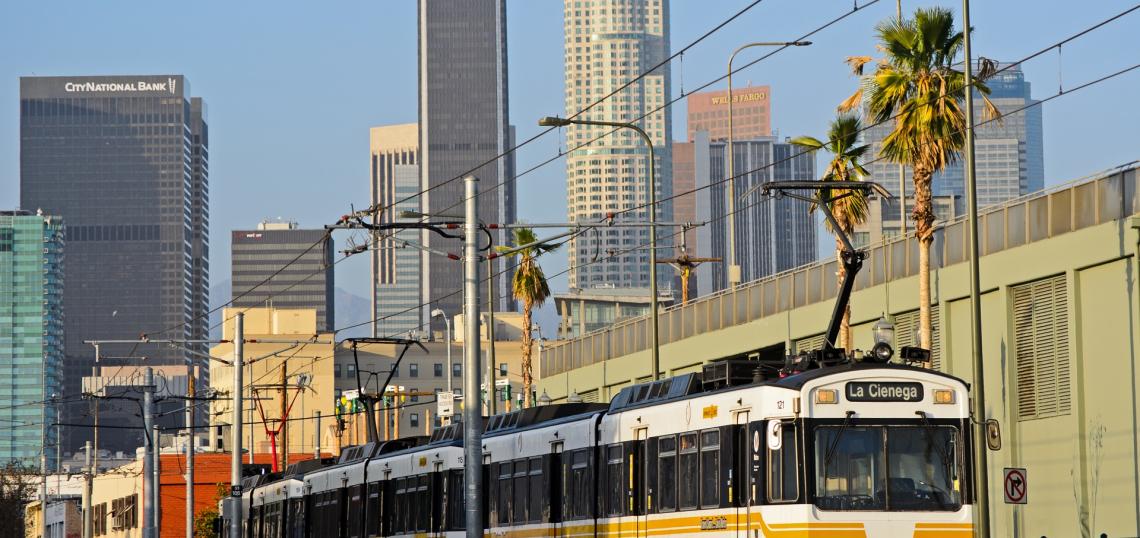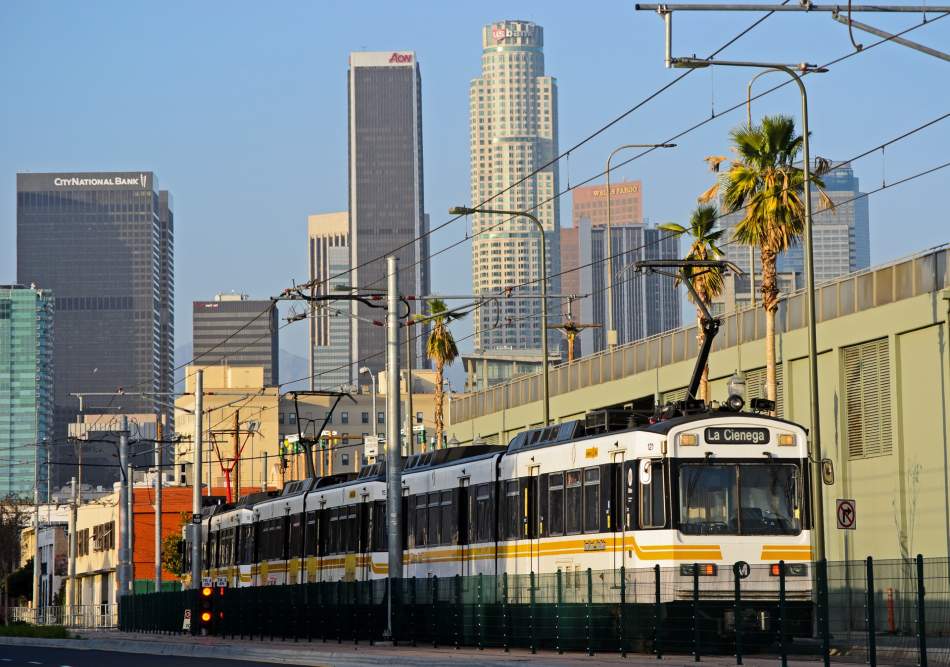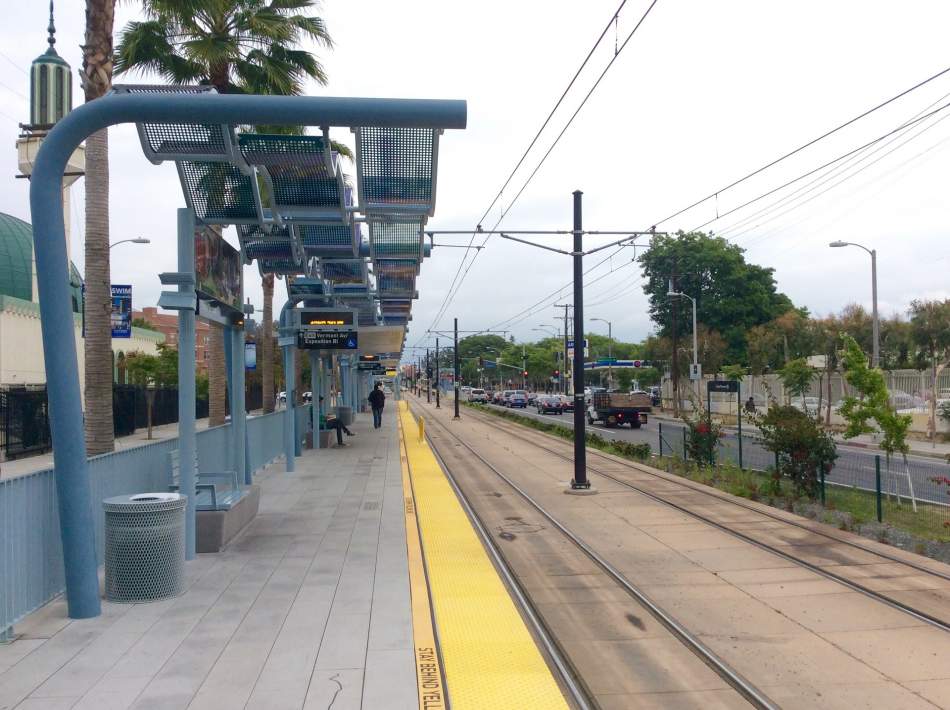Nearly eight years after making its debut, the Expo E Line will finally have a quicker trip through the City of Los Angeles.
Earlier this week, the City Council has moved to adopt recommendations from the Department of Transportation (LADOT) to expand signal priority on the street-running sections of the E Line - where trains are frequently forced to stop at intersections - with the goals of reducing end-to-end travel times and achieving at least 90 percent travel time reliability.
According to a report given last month to the City Council's Transportation Committee, the E Line has in some ways been a victim of its own success. Although traffic signals have been timed to account for light rail trains since 2012, increased ridership on E Line has resulted in delayed boarding times at stations, thus making it difficult for trains to meet the current two-minute light signalization schedule. LADOT believes that modifications to the sequencing of traffic signals can account for the slower boarding times and reduce delays.
LADOT tested this strategy at the signalized crossing of Normandie Avenue, and found that the average delay was reduced from 27 seconds to 17 seconds. Likewise, the changes allowed 79 percent of trains to cross Normandie without stopping for cross-traffic - up from just 58 percent before the modifications.
The report recommended that the same modifications be applied to the E Line's intersections with Western and Vermont Avenues.
As part of its vote, the City Council has directed LADOT to report back in 60 days on the results of the changes so far, and also to discuss the feasibility of full signal pre-emption on all or portions of the street-running sections of the E Line.
The sluggish pace of the E Line - particularly as it approaches Downtown Los Angeles - has prompted calls for full grade separation along Flower Street between Pico Station and the wye junction between the E and Blue A Line. This stretch of at-grade track has been plagued by collisions between trains and automobiles, as attested to by the crossing gate installed at an on-ramp to the Santa Monica Freeway in 2017.
- L.A. City Councilman Wants to Speed Up the Expo Line (Urbanize LA)









